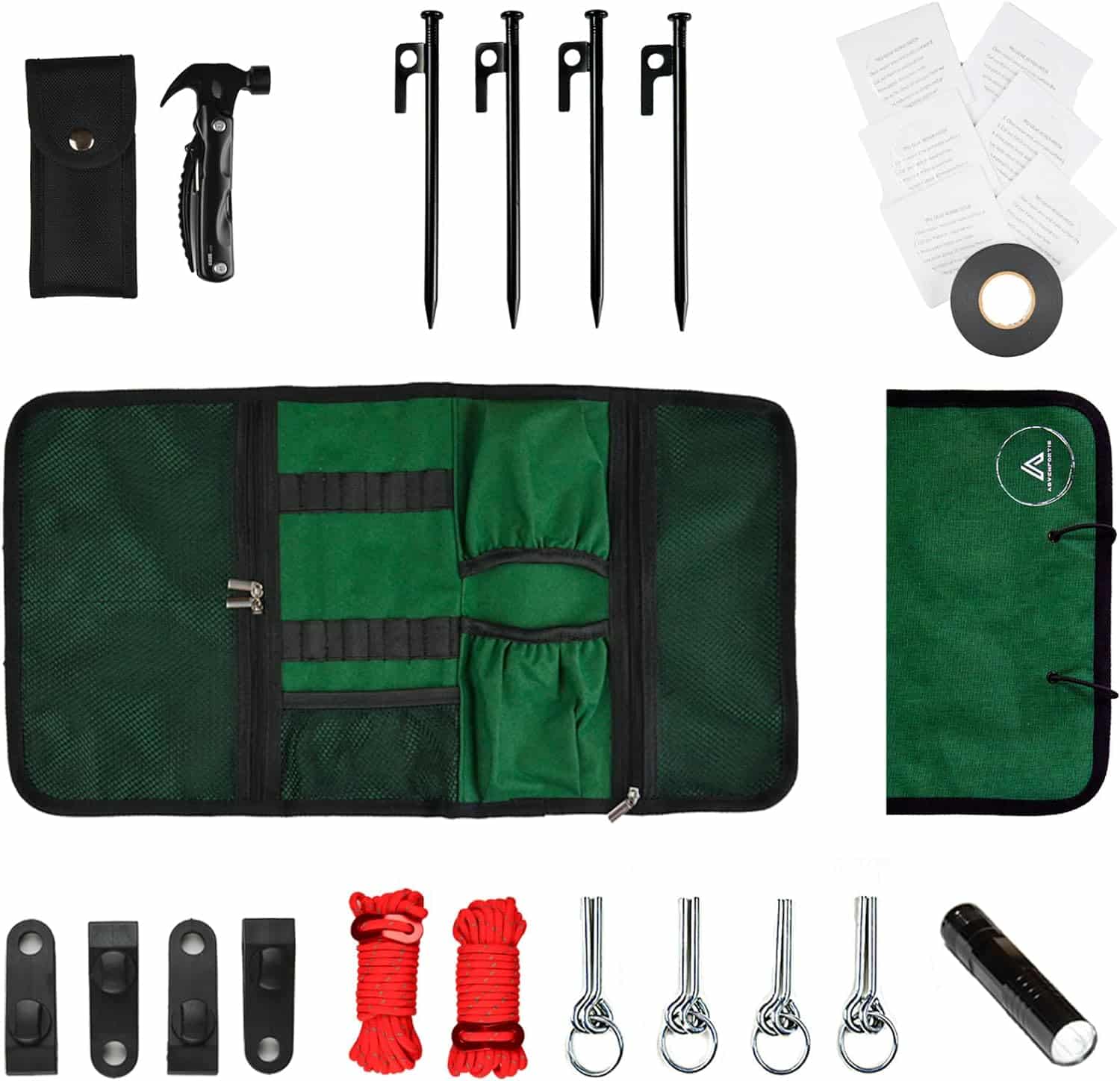A customized survival kit is crucial for ensuring you have the specific tools and supplies needed for your individual needs and outdoor activities. By tailoring your kit to your preferences and requirements, you can better prepare for potential emergencies during your adventures. A customized survival kit can give you peace of mind and confidence in handling unexpected challenges effectively.
Factors to Consider When Customizing Your Survival Kit
When customizing your survival kit, several factors must be considered to ensure that you include the right items for your specific needs. These factors may include the duration and location of your outdoor activities, the number of people in your group, the potential risks and hazards you may encounter, and any personal medical conditions or requirements. By carefully evaluating these factors, you can create a personalized survival kit with the necessary tools and supplies to stay safe and prepared.
Assessing Your Specific Needs

Identifying Potential Threats in Your Environment
When customizing a survival kit for your specific needs, it’s crucial first to identify potential threats in your environment. Consider factors such as weather conditions, wildlife, terrain, and any particular risks associated with the area you will be in. This information will help you determine the tools, supplies, and equipment you must include in your survival kit to address these potential threats effectively.
Determining Your Requirements for Survival
Determining your survival requirements is equally important when customizing a survival kit. Take into account any medical conditions you have, dietary restrictions, personal preferences, and any other specific needs that may impact your survival in an emergency. By tailoring your survival kit to meet your requirements, you can ensure you have the necessary resources to stay safe and healthy in challenging circumstances.
Choosing the Right Container for Your Survival Kit
Types of Containers for Survival Kits
When customizing a survival kit, it’s essential to consider the types of containers available. Some popular options include durable nylon pouches, waterproof cases, compact tins, and even multi-purpose tools that double as storage containers. The choice of container will depend on the user’s specific needs and the survival kit’s intended use.
Factors to Consider When Selecting a Container
Factors to consider when selecting a container for a survival kit include size and weight restrictions, durability, water resistance, organization features (such as compartments or pockets), ease of access to supplies, and versatility for attachment to gear or clothing. It’s also essential to ensure that the container is compatible with the items being carried and can withstand the potential rigors of outdoor adventures.
Selecting Essential Items for Your Survival Kit

Basic Survival Items to Include in Every Kit
When customizing a survival kit, some basic items should be included in every kit. These typically include bandages, antiseptic wipes, a flashlight, a multi-tool, a whistle, and emergency food and water supplies. These items are essential for addressing common emergencies and ensuring your basic needs are met in a survival situation.
Specialized Items Based on Your Specific Needs
In addition to the basic survival items, it’s essential to customize your kit with specialized items based on your needs. For example, you may want to include an EpiPen or antihistamines if you have allergies. If you have a medical condition requiring specific medication, include that in your kit. Consider any unique circumstances or environments and tailor your kit accordingly.
Customizing Your Survival Kit for Different Environments
Urban Survival Kit Essentials
When customizing an urban survival kit, it’s essential to consider the unique challenges of navigating a city environment. Some critical items to include in your kit are a map of the city, a flashlight, a multi-tool, a portable phone charger, cash, a whistle, and a small first aid kit. These items will help you navigate busy streets, communicate in case of emergencies, and handle minor injuries. Additionally, consider including items specific to your city’s climate, such as sunscreen or hand warmers. Remember to regularly check and update your urban survival kit to ensure you are prepared for any situation in the city.
Wilderness Survival Kit Essentials
When customizing a wilderness survival kit, it’s essential to prioritize items that will help you survive in remote and potentially harsh environments. Some essential items to include in your kit are a shelter (such as a tent or emergency blanket), a fire starter, a water purification method, a knife, a compass, and high-energy snacks. These items will help you stay warm, hydrated, and nourished while navigating the wilderness. Additionally, consider including items specific to the terrain you will explore, such as insect repellent or a bear bell. Regularly practice using the items in your wilderness survival kit to ensure you can rely on them in an emergency.
Maintaining and Updating Your Customized Survival Kit

Regularly Inspecting and Replacing Items
It is crucial to regularly inspect your survival kit to ensure that all items are in good condition and have not expired. Check for any damage or wear and tear on items such as bandages, medications, food, and batteries. Replace any expired items and replenish any used supplies. Rotating out food and water supplies to ensure freshness is also essential. By regularly maintaining and updating your kit, you can be confident that it will be ready to support you in an emergency.
Reviewing and Adjusting Your Kit Based on Feedback and Experience
After using your survival kit in real-life scenarios or during practice drills, take note of any items that were not useful or missing. Consider feedback from others who have used the kit and make adjustments accordingly. For example, if you need more water or a different tool, make changes to your kit to better suit your specific needs. By continuously reviewing and adjusting your kit based on experience and feedback, you can create a customized survival kit tailored to your unique requirements.

Leave a Reply
You must be logged in to post a comment.